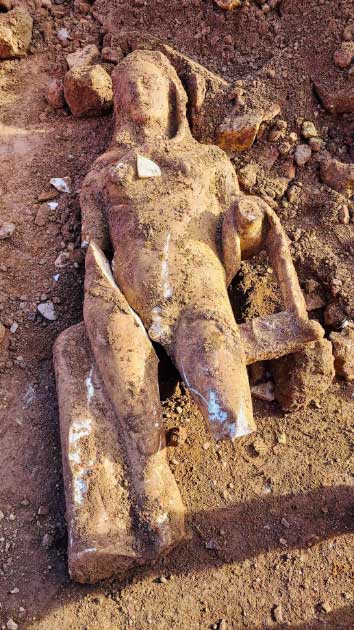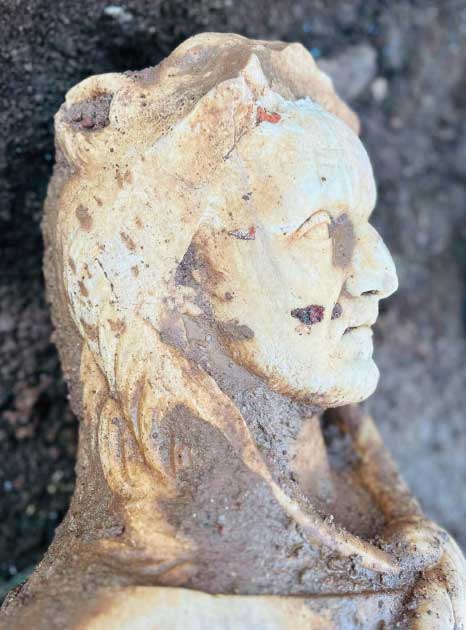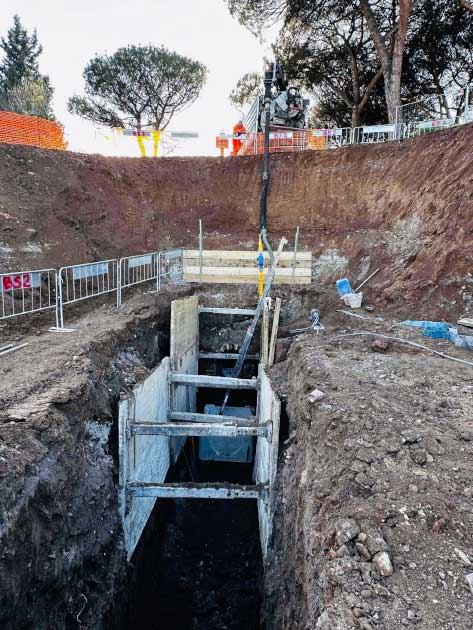[ad_1]
Archaeologists in Rome have made an exciting discovery while conducting excavation work to repair collapsed sewage pipes in Parco Scott, a part of the Appia Antica Archaeological Park. They stumbled upon a life-size marble statue of the demigod Hercules, believed to date back to the Roman imperial period – not exactly what you expect to find in an old sewer!
The Appia Antica Archaeological Park announced on Facebook that the area “has reserved a great surprise for us: a life-size marble statue which, due to the presence of the club and the lion’s coat covering its head, we can certainly identify as a figure representing Hercules”.

Statue depicts Hercules with a club and lion skin covering its head. Credit: Archaeological Park of Appia Antica
In Roman mythology, Hercules is the son of Jupiter and the mortal woman Alcmena. He is considered one of the greatest heroes in Roman legends and was known for completing the famous ” Twelve Labors ,” which were a series of tasks given to him by the king of Mycenae, Eurystheus, in order to gain immortality and a place among the gods.
The Guardian reports that the statue of Hercules was pulled from the sewer between the busy Cristoforo Colombo Road and the ancient Appian Way . Archaeologists stressed that it was not found in its original location and is believed to have been buried during construction work for the sewer system in the first half of the 20th century. Francesca Romana Paolillo of the Italian culture ministry explained that this may have happened because there were no archaeological checks in place.

Statue of Hercules found near the Appian Way. Credit: Archaeological Park of Appia Antica
The Ancient Appian Way
The primary goal of the excavation work was not to find the statue, but rather to locate the starting point of the first mile of the Appian Way, known also as the Regina Viarum or “Queen of Roads.”
The Appian Way was begun in 312 BC and stretched from Rome to Brindisi, covering a distance of 500 km. If it becomes a UNESCO site, it would be the second longest such site after the Great Wall of China.
The road was built in order to connect Rome to the rest of the empire and was one of the earliest and most strategic Roman roads. It was used as a military road and was also an important trade route, connecting Rome to the ports on the Adriatic Sea.
The Appia Antica Park, a protected area of the Appian Way, is a popular destination for tourists and history buffs. It contains the remains of ancient Roman villas, tombs, and monuments as well as parks and nature reserves.

The old sewer where archaeologists found the statue of Hercules. Credit: Archaeological Park of Appia Antica
Excavations Precluded by Groundwater
Over the past few months, experts have been digging at the site, and they have reached a depth of eight meters, but had to stop due to excessive groundwater that proved unmanageable even with water pumps. However, they did uncover the remains of a 10-century road, which they believe is proof that the route followed the course of the ancient Appian Way through the Middle Ages.
Despite the discovery of the statue, the elusive starting point of the Appian Way remains hidden underground for now.
Top image: Statue of Hercules found near the Appian Way. Credit: Archaeological Park of Appia Antica
By Joanna Gillan
[ad_2]
Source link
